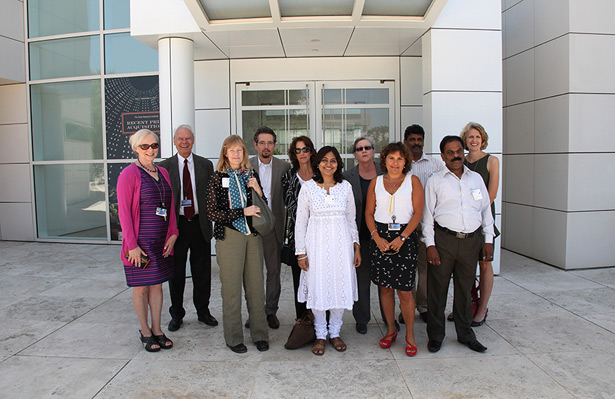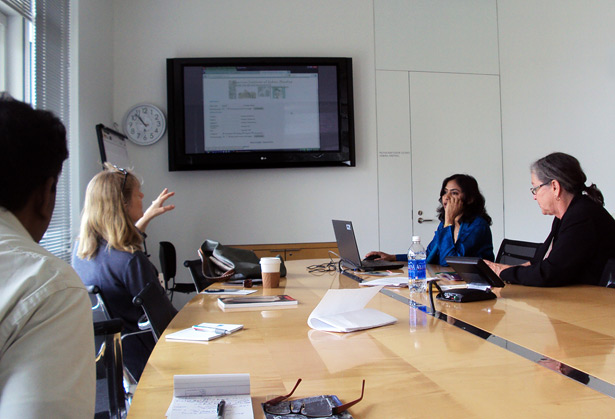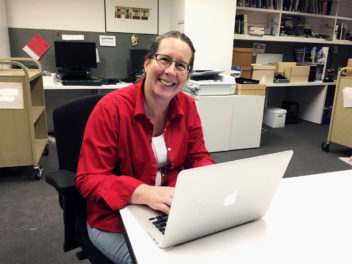
Kailasanatha temple, Kanchi, Chingleput District, Chennai. View from the northeast. Patron: Rajasimhavarman. Circa 695–722 C.E. Granite. Courtesy of the Center for Art and Archaeology, American Institute of Indian Studies
The Getty Research Institute (GRI) recently welcomed a delegation from the Center for Art & Archaeology (CA&A) of the American Institute of Indian Studies (AIIS) for a weeklong series of presentations, demonstrations of digital projects, and brainstorming and strategy sessions.
The CA&A and the GRI have many similarities: we both have art libraries, active digitization programs, and photo archives for the study of art and cultural heritage. And we’re both located in major centers—the CA&A’s offices are in Gurgaon, a satellite of New Delhi.
During the week’s visit, we discussed opportunities and trends in digitization, preservation, and online publication of digital versions of visual collections with the Indian delegation, led by CA&A director and art historian Dr. Vandana Sinha and Professor Janice Leoshko of the University of Texas at Austin, chair of the AIIS Art & Archaeology Committee.

The delegation from the CA&A with colleagues from the Getty Research Institute and the Getty Foundation
Our focus was on best practices for descriptive metadata and controlled vocabularies—in layman’s terms, standardized ways of describing objects so that information is findable across the world’s art and cultural institutions.
Specifically, we talked about optimal ways of describing the 200,000 images of Indian art and architecture in the CA&A’s collection. We’re excited to report that this data will join our newest vocabulary, the Cultural Objects Name Authority (CONA™), a growing index of art and cultural heritage in museums and sites around the world. CONA has already received contributions from institutions as varied as the Rijksmuseum in Amsterdam, the National Palace Museum in Taipei, and Te Papa, the Museum of New Zealand. The data from the CA&A will be invaluable for researchers and students interested in South Asia. The initial version of CONA will be launched on the GRI’s Web site in late 2012.

A working session with colleagues from India. Speaking (left), Janice Leoshko from the University of Texas at Austin; at right, Vandana Sinha of the CA&A and me
This productive summer collaboration was part of the Research Institute’s goal to mentor other institutions in making their digitized collection materials available and findable on the Web. We’ll continue the relationship with our CA&A colleagues over the coming months through webinars and good old-fashioned email.

Diagram from the CA&A photo archives pairing an elevation of a Hindu temple with associated architectural terms. Courtesy of the Center for Art and Archaeology, American Institute of Indian Studies




I am looking for information and architectural drawings of the Chidambaram Temple. My special are of interest is the nat mandapa. Please let me know if you can make available any resources for the same.
hi ,,,,i am an architecture student…and i did my dissertation on madurai meenakshi temple…with great difficult i had to find documentation on the heritage and temple architecture.it would be great if we get the madurai mennakshi temple also documented and digitalised extensively for future reference.